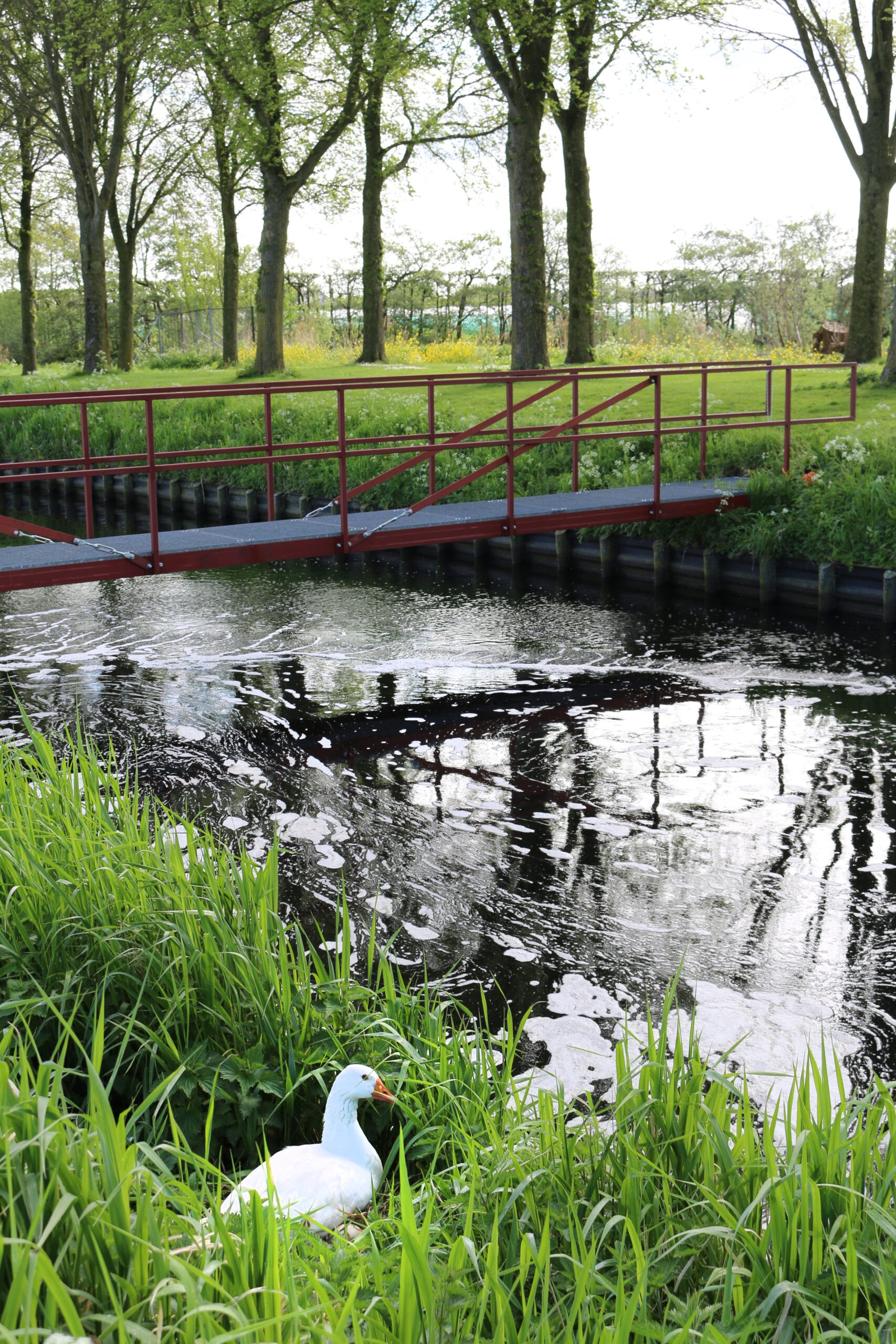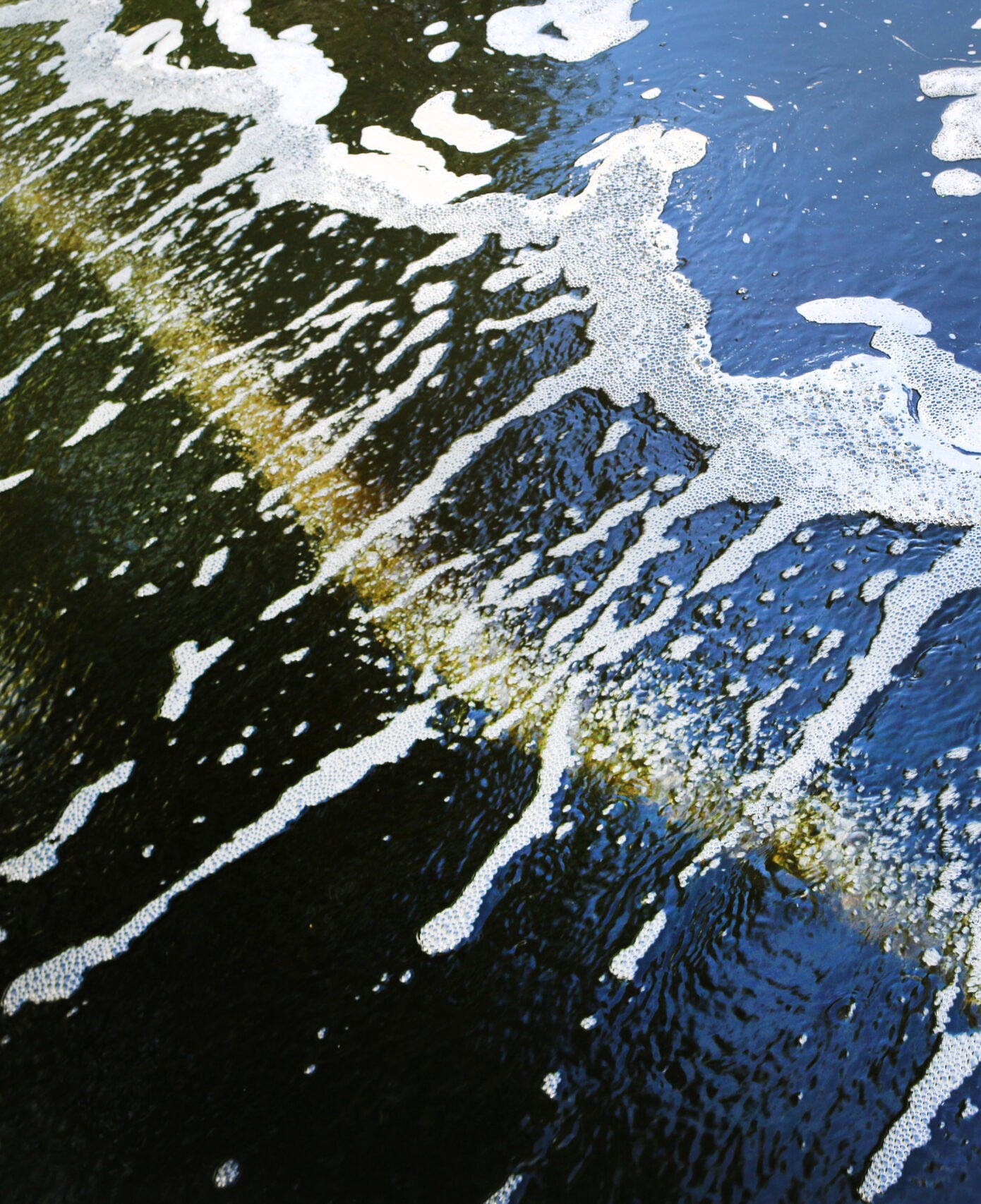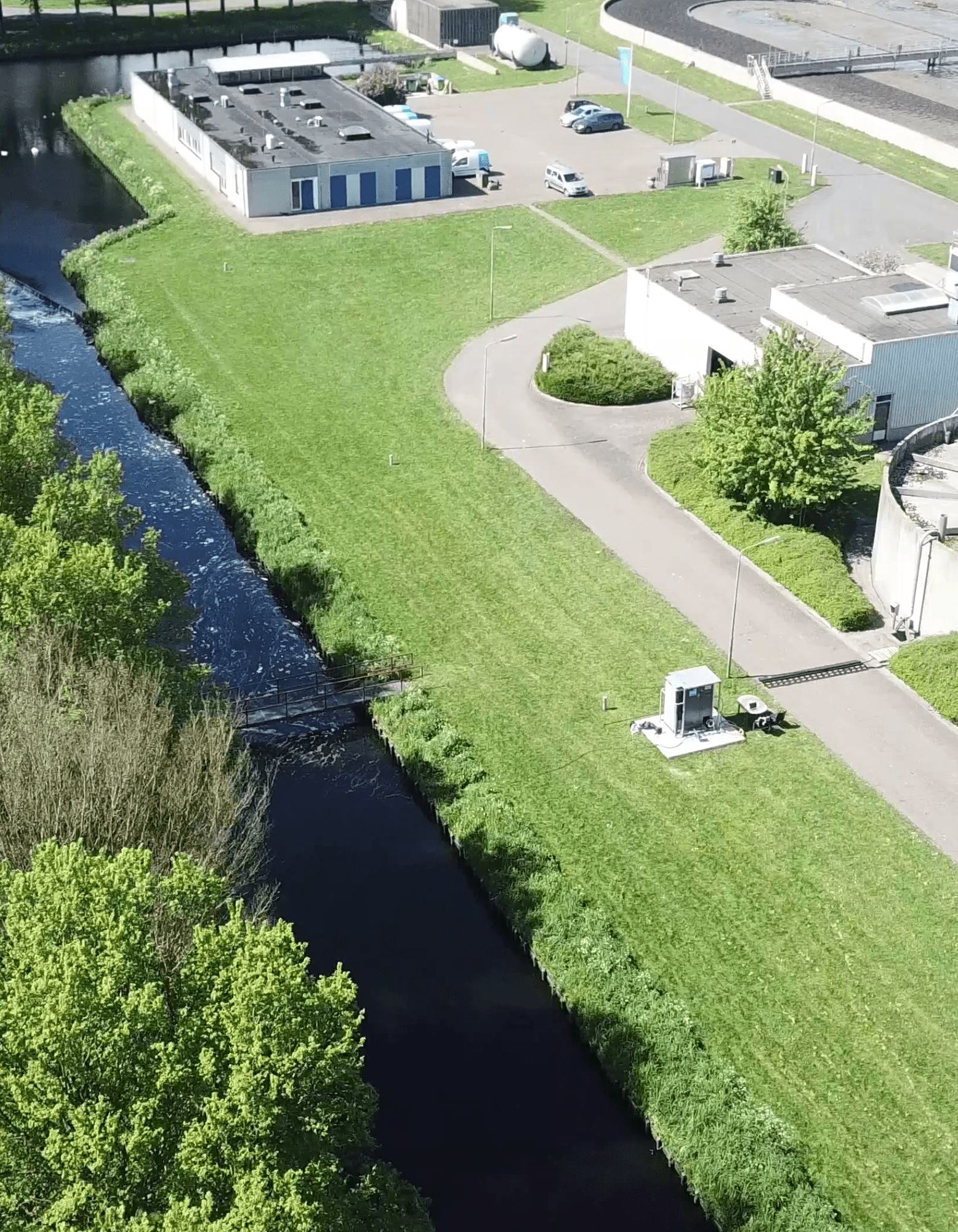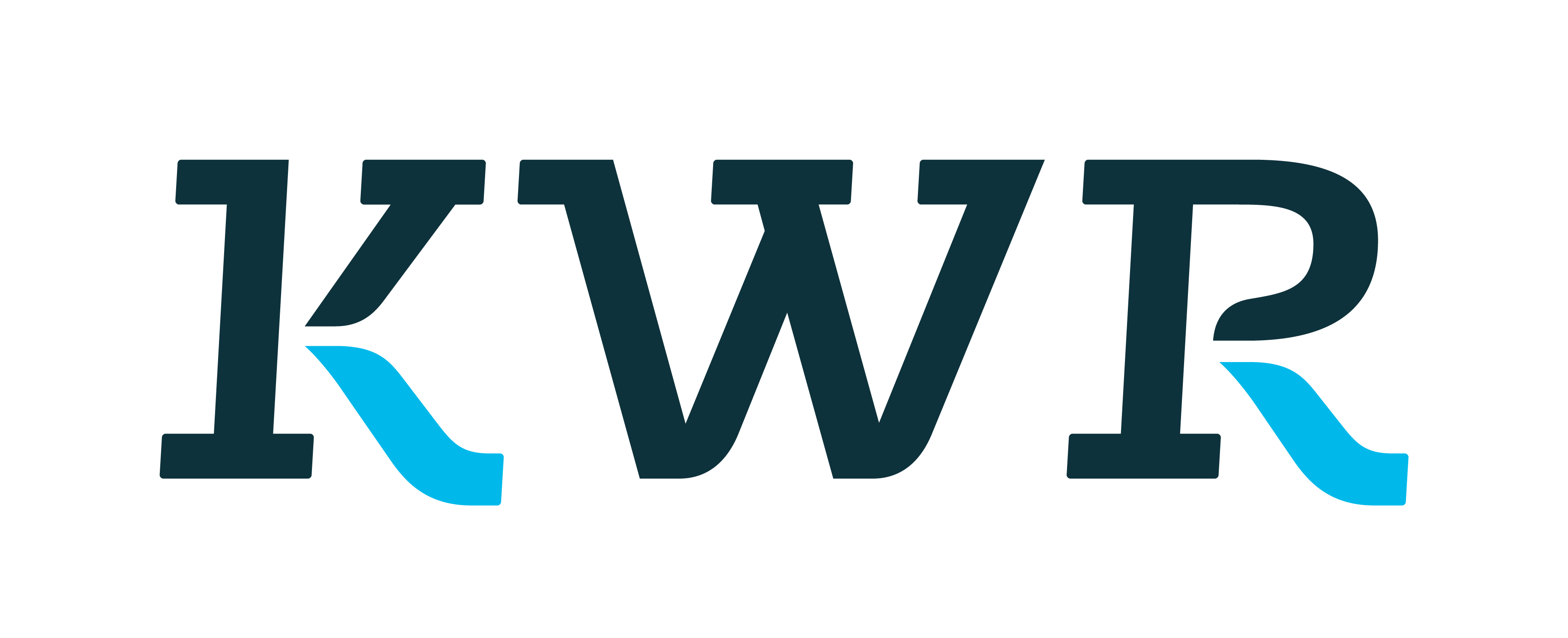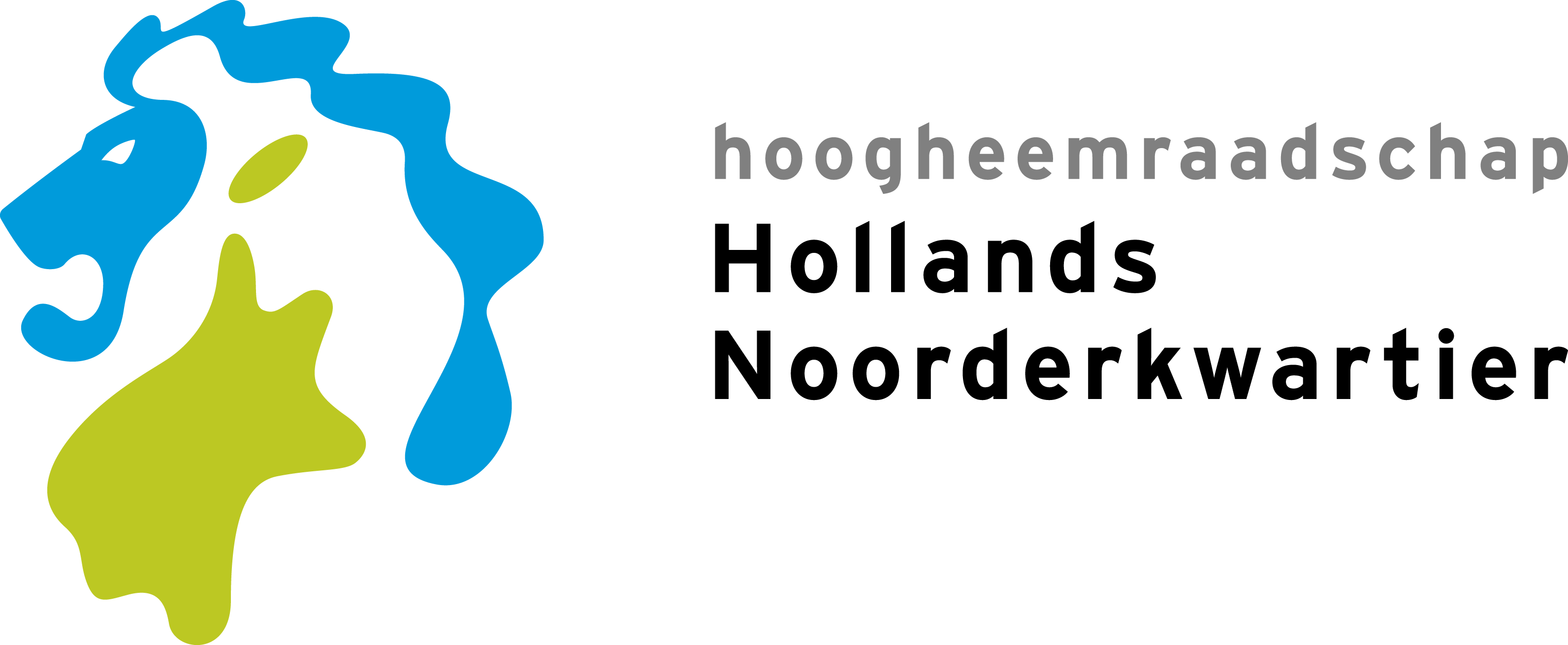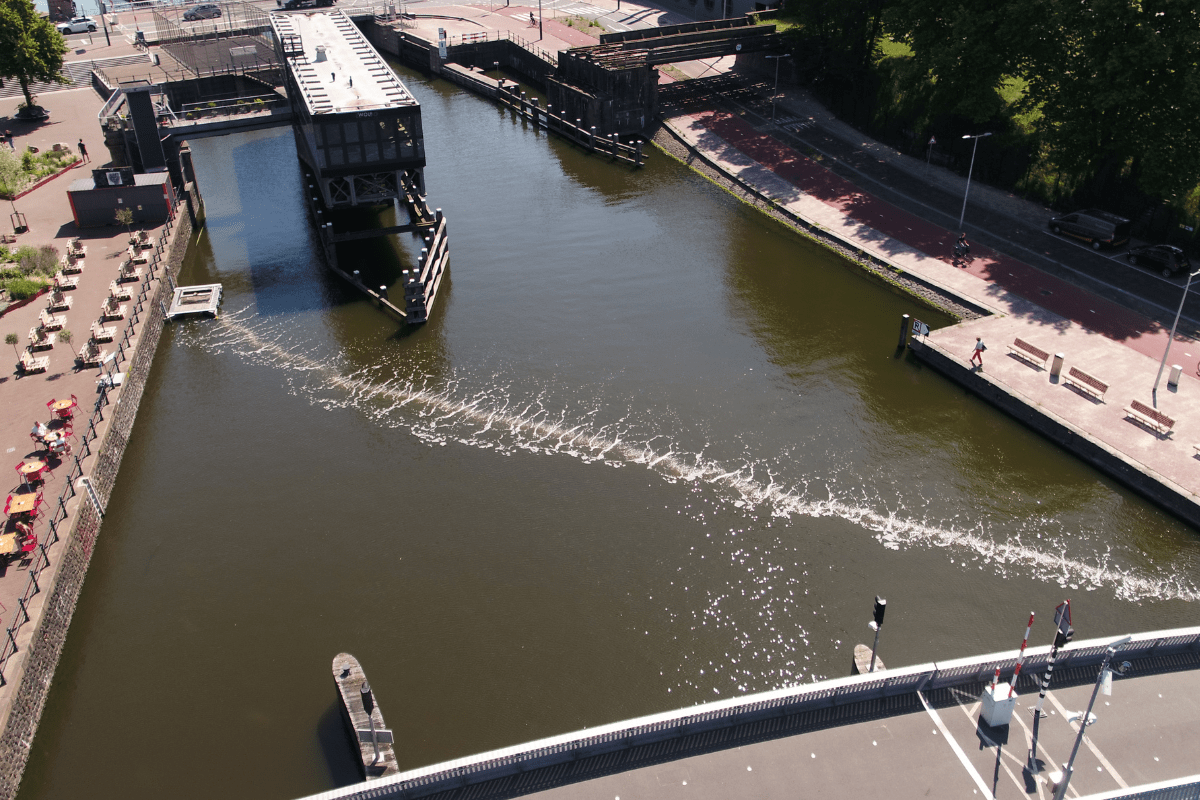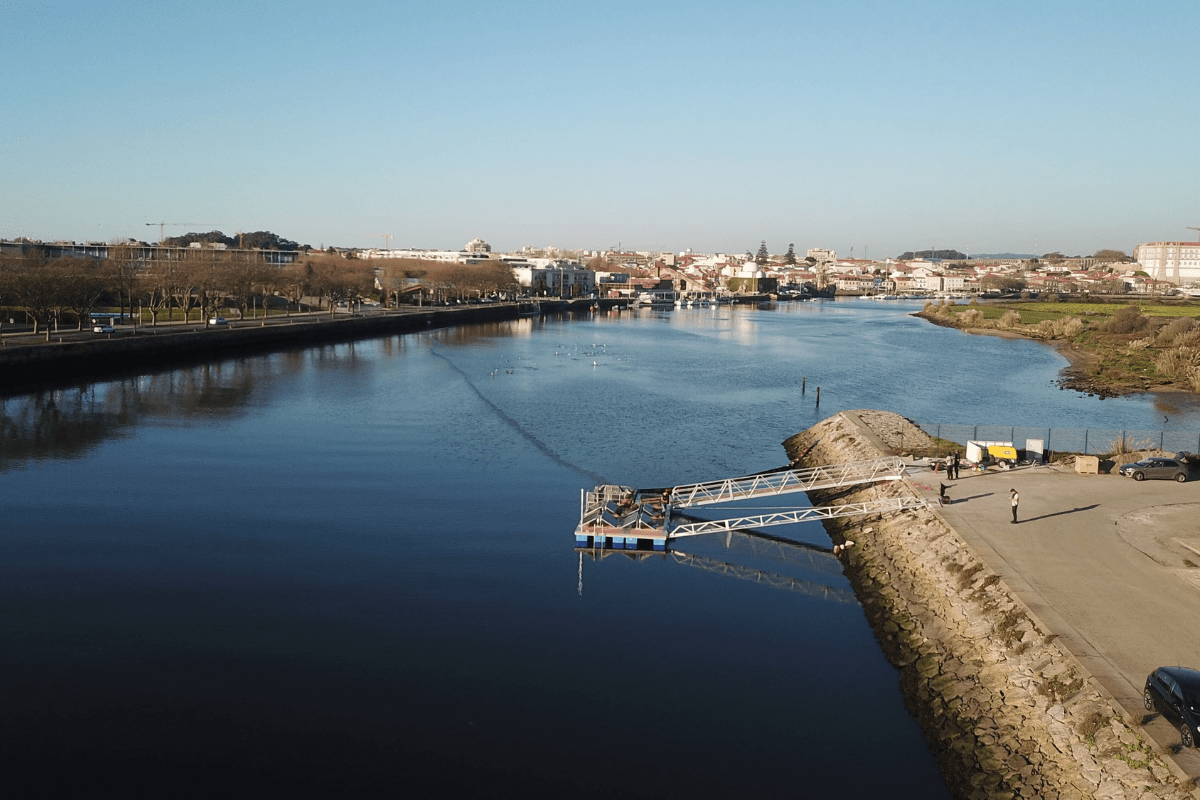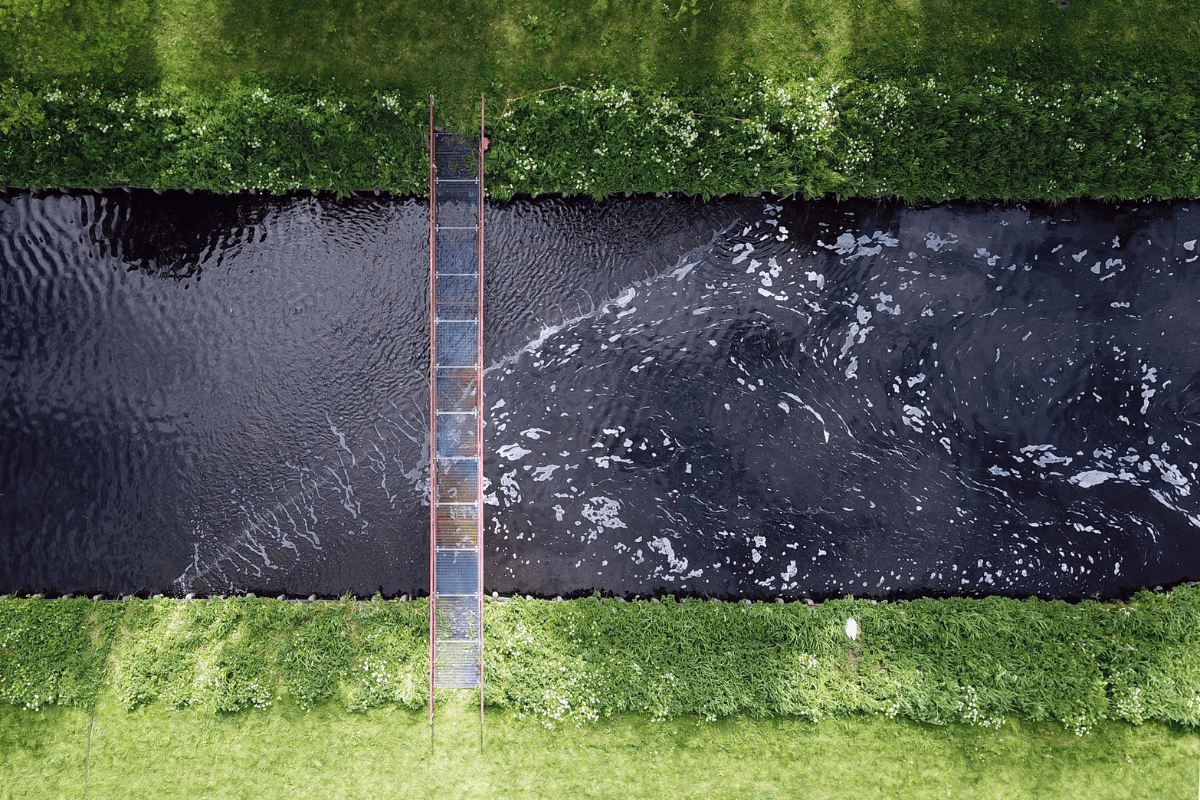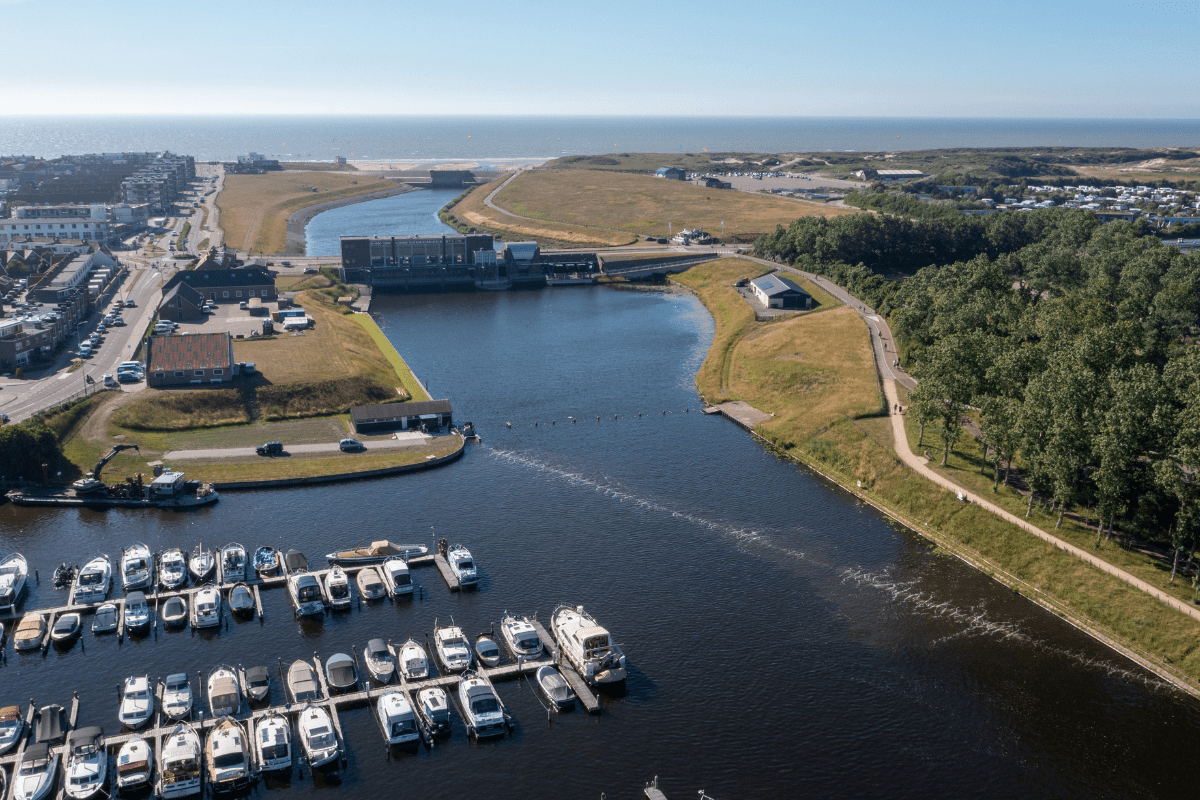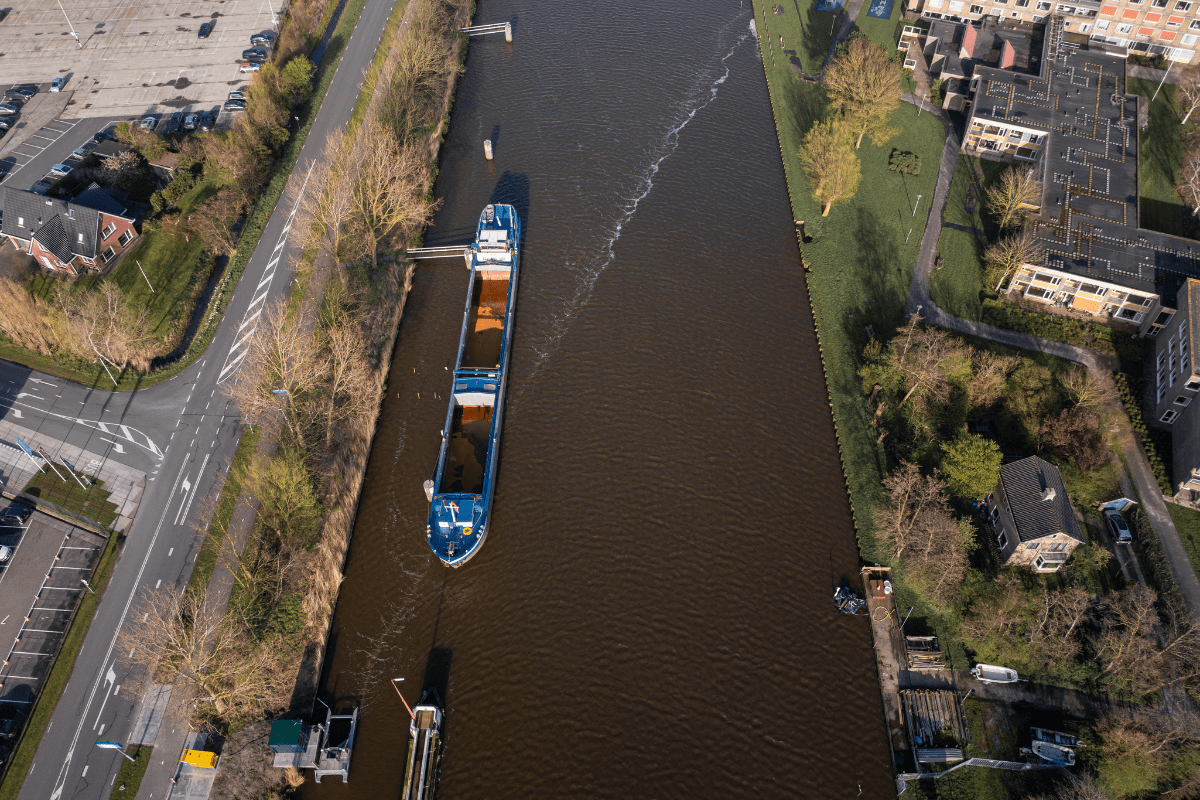MICROPLASTICS RESEARCH:
Bubble Barrier
Wervershoof
Microplastic particles are present in every part of our environment and pose a serious threat to our ecosystem and human health. The tiny particles are fragments of a diverse range of plastics <5mm in size.
The Great Bubble Barrier’s mission is to rid rivers and canals of all sorts of plastics, thereby preventing the oceans from being polluted and protecting the global ecosystem.
During a test conducted in Berlin, the Bubble Barrier was proven to trap buoyant fragments as small as 1mm, therefore stopping microplastics.
RESEARCH GOALS
Microplastics in treated wastewater
In a joint project, Water Research Institute KWR , Hoogheemraadschap Hollands Noorderkwartier, PWN, PWN-T and Het Water Laboratorium teamed up with The Great Bubble Barrier to investigate how a Bubble Barrier could reduce the volume of microplastics in treated wastewater outflow and ultimately prevent them from entering the environment.
To achieve this goal, the consortium needed to find an effective removal technique, as well as reliable analytical techniques to monitor microplastic concentrations. The consortium therefore investigated:
- The amount of microplastics in the treated wastewater (effluent);
- The ability for a bubble curtain (Bubble Barrier) to remove microplastics of 0.02-0.5mm;
- The improvement and standardisation of the technique for measuring microplastics.
Through this research, the consortium is advancing our understanding of the nature of the microplastic problem and reducing the occurrence of microplastics in surface water which poses a threat to people and planet.
Bird’s eye view of Bubble Barrier Wervershoof | Timelapse 4 min
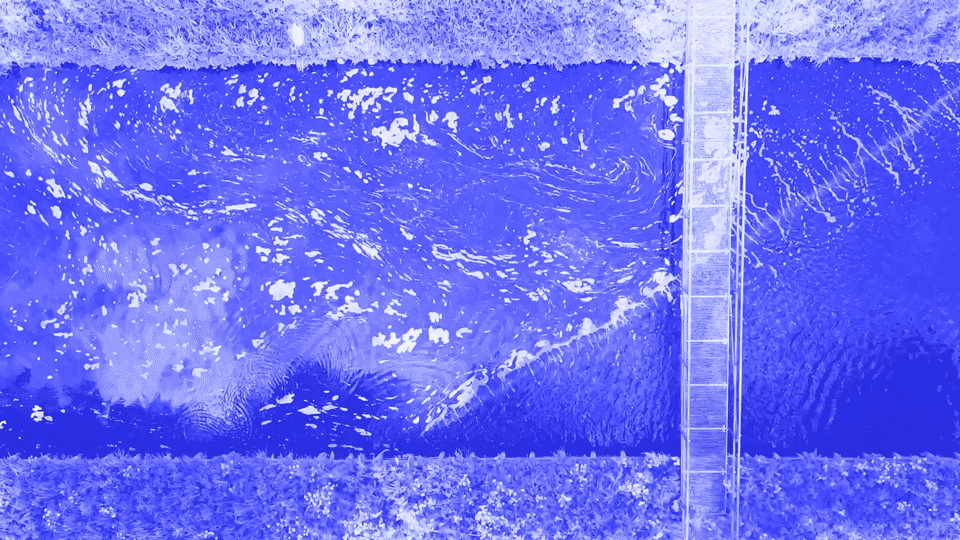
THE LOCATION
Wastewater treatment in Wervershoof
The Bubble Barrier was installed at a wastewater treatment plant in Wervershoof, North Holland. It was sited in the effluent canal immediately at the outfall of the wastewater treatment facility. The canal transports purified wastewater back into rivers and eventually the ocean.
Studying the Bubble Barrier installation provided insight into the potential for a Bubble Barrier to remove microplastics from water. To assess the impact, KWR selected three measurement locations and assess plastic concentrations every other week using the TRAMP methodology. The Bubble Barrier in Wervershoof was 16 metres long.
Monitoring point 1 – Baseline
The baseline location was chosen to be able to identify the volume of microplastics within the effluent immediately after the wastewater has been treated.
Monitoring point 2 – The effect
The second location allowed the consortium to assess the presence of microplastics in the water just before it reached the Bubble Barrier. We would expect to see a higher concentration of microplastics at this point, because the Bubble Barrier creates a circular current, pushing plastics to the surface.
Monitoring point 3 – The result
The final location assessed the presence of microplastics in the water just after it had passed through the Bubble Barrier. We would expect a lower concentration of microplastics compared to monitoring point 2.
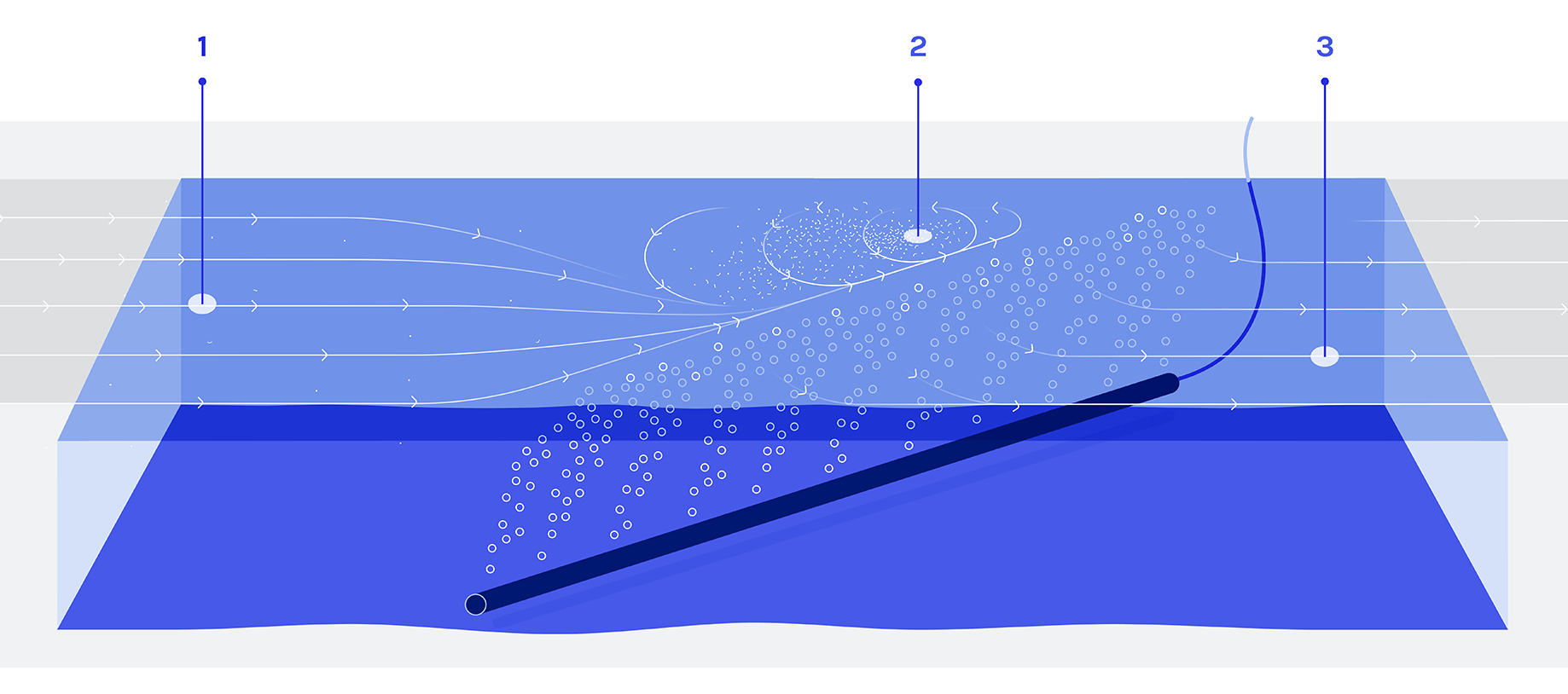
Research setup Bubble Barrier Wervershoof | Schematic illustration
OUTCOME & EXTERNAL FACTORS
In the context and conditions studied it didn’t detect a difference between the amount of microplastics in front of the bubble curtain and behind it. There could be several reasons for this relating to sampling methods, water depth, weather and water flow, as well as to limitations in the analytical detection methods. These are discussed below.
- Analytical & sampling methods: These results are heavily dependent on the sampling method applied and the form of analysis conducted. Currently, there are no standardised methods for measuring microplastics; the volume of microplastics detected varies significantly depending on the analytical method used. Consequently, it is difficult to conclusively assess the efficacy of a bubble curtain in reducing microplastics.
- Depth: The sampling depth was fixed at 15cm below the surface of the water. However, the distribution of plastics throughout the water column is unknown, but unlikely to be homogeneous. The Bubble Barrier may have forced larger particles to the surface and trapped them, but it is impossible to prove this without sampling microplastics at different depths, which was not feasible for this study.
- Particle size: Though the installation of a bubble curtain has previously been shown to effectively trap microplastics, it is possible that the water treatment process had removed many of the larger particles and there were too few of >1mm for the Bubble Barrier to make a significant difference.
- Weather: Storm events may cause short-term peaks in plastic outflow and the potential effects of these events are not yet well understood.
Next steps
The study identified the need for standardised methods of assessment and a deeper understanding of the factors influencing plastic presence, e.g., sampling depth, weather conditions and day-to-day fluctuations in plastic volumes and water flow. These should all be the subject of future research.
The consortium will look for opportunities for potential future collaboration.
The Great Bubble Barrier is open to conduct further research in collaboration with research institutes to investigate and explore how it can extend its success to particles <1 mm.
VIEW MORE PROJECTS
Never enough bubbles
Get inspired by other Bubble Barrier locations!

